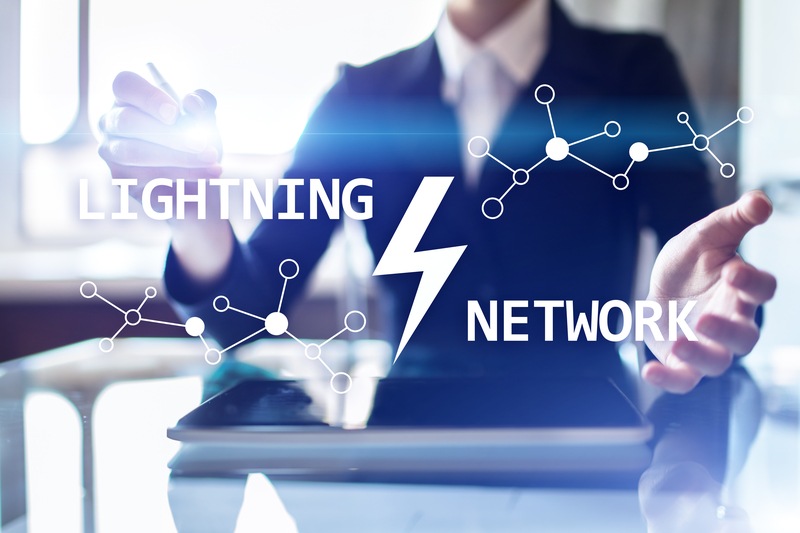£0.00

February 27, 2020
What Is The Lightning Network?
Based on official media statements, the development of the original sources belongs to Joseph Poon and Tayj Drage. Whitepaper LN was compiled long before development (it is said in 2015), but the scalability technology received wide publicity only in dark times – when the BTC system processed transactions for almost a week, with extremely high commissions. In general, the Lightning Network has already been dubbed Bitcoin’s “savior and future”, and it came to us when it was most needed for us – when Bitcoin “hung and lagged”.

LN is only alpha.
At the moment, LN is at the alpha version stage, which was launched on January 10, 2017. This indicates that the technology is at the development stage, and is being tested inside the developer company. Alpha versions usually differ by incomplete functionality and a bunch of tests through which the source code of the program is passed. So in the near future, no one will use the Lightning Network for “good reasons”.
How it works
The main task of Lightning Network is to reduce the burden on transaction processing and pressure on the main Bitcoin network. Thus, the Lightning Network improves the processing speed of the network, allowing users to conduct business without immediately registering transactions in the base register. If two traders open a payment channel and start performing several transactions over time, the transactions are not recorded in the base book. However, the opening of the channel is recorded.
We will try not to go deep into the “stuffing” of LN while transferring the main essence of the functioning of the system. In the entire Bitcoin platform, there are no units that connect the sender and the recipient. There is a stack of memory (pool), where all transactions are collected before they are “caught by the miners”, and blind in one block, which then goes into the blockchain. As long as your transaction is not “caught” and not recorded on the blockchain, you will not receive your money.
But even this does not solve the problem of Bitcoin.
And on the contrary, it only creates new ones. Private channels are not ideal. In real life, people will exchange not only with each other but also with those who do not know at all. That is, it will take a lot of channels, and this, in turn, can lead to even more “clogging” of the common chain.

What does all this mean?
This means only one thing – the birth of the payment system of a new generation. In order to send a transaction, the user will search for already open “channels” for transmission. At the same time, the channels themselves will be public, and therefore safe.
If the developers still manage to bring their code out of the “alpha test” phase, and we see the green light opposite “Final, Stable”, Bitcoin, as a payment system, expect changes, and, quite likely, a great future. And we, as traders – new crypto-adventures.

32 Comments
custom paper service https://term-paper-help.org/
professional paper writer https://sociologypapershelp.com/
scientific paper writing services https://uktermpaperwriters.com/
write my paper please https://paperwritinghq.com/
how to find someone to write my paper https://writepapersformoney.com/
do my paper for me https://write-my-paper-for-me.org/
write my paper for money https://doyourpapersonline.com/
someone write my paper for me https://top100custompapernapkins.com/
paper help https://researchpaperswriting.org/
paying someone to write a paper https://writingpaperservice.net/
will you write my paper for me https://buyessaypaperz.com/
pay someone to write my paper https://mypaperwritinghelp.com/
help writing my paper https://writemypaperquick.com/
paper writing help https://essaybuypaper.com/
where to buy resume paper https://premiumpapershelp.com/
paper helper https://studentpaperhelp.com/
3selection
coursework master https://courseworkninja.com/
coursework writing service uk https://writingacoursework.com/
buy coursework https://mycourseworkhelp.net/
coursework resources https://courseworkinfotest.com/
creative writing coursework ideas https://coursework-expert.com/
buy coursework https://teachingcoursework.com/
coursework writing service uk https://buycoursework.org/
free personals site https://freewebdating.net/
popular dating sites https://jewish-dating-online.net/
online marriage sites in usa https://sexanddatingonline.com/
zoosk online dating site https://onlinedatingsurvey.com/
dating free chating https://onlinedatingsuccessguide.com/
free good https://onlinedatinghunks.com/
singles site https://allaboutdatingsites.com/
find free dating site https://freedatinglive.com/